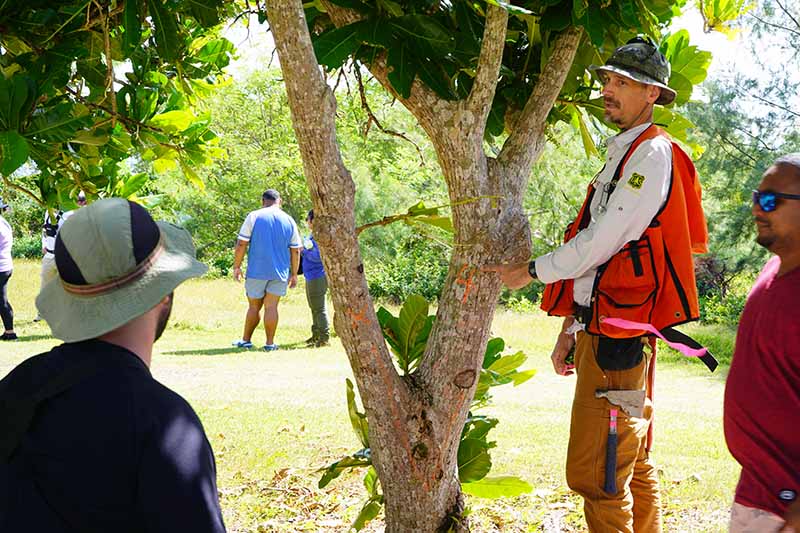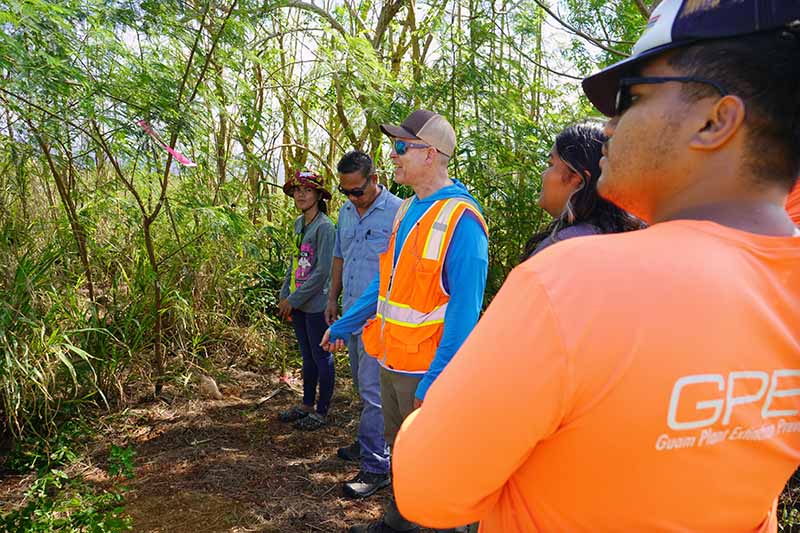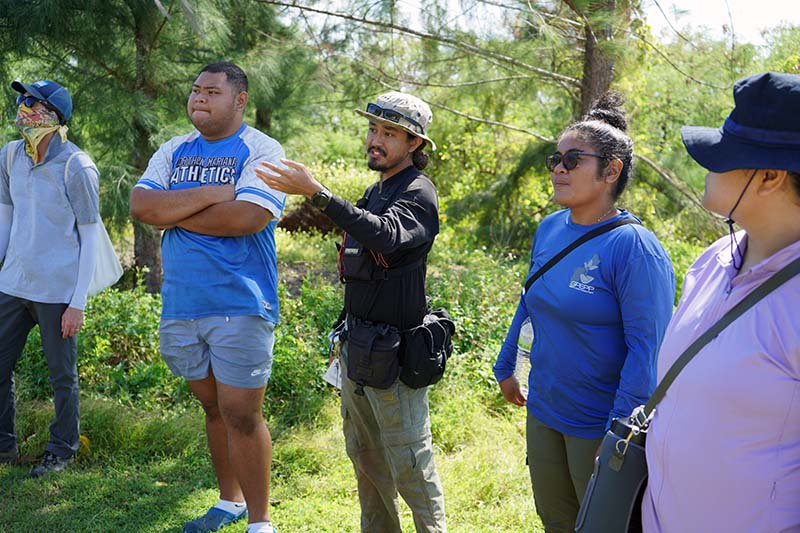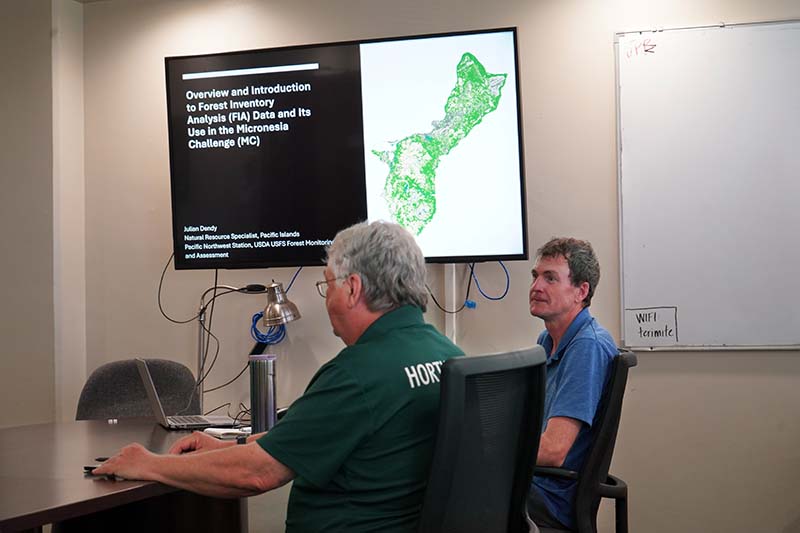UOG researchers assist with decennial U.S. forest inventory in Guam
UOG researchers assist with decennial U.S. forest inventory in Guam
UOG researchers assist with decennial U.S. forest inventory in Guam
4/2/2024
Fourteen research assistants from the University of Guam College of Natural & Applied Sciences have been trained to assist the U.S. Department of Agriculture Forest Service with its decennial Forest Inventory & Analysis. Forest data collection in Guam took place for the first time in 2002. The second survey was held in 2013, and this year marks the third survey.
The FIA is a congressionally mandated program of the USDA Forest Service that has been taking place for 80 years. Its purpose it to monitor the status and trends of forest resources across all U.S. states, territories, and affiliated Pacific Islands. With the surveys happening at regular intervals on the same permanent plots, the analysis delivers consistent data for comparison over time.
“The surveys give agencies and researchers baseline data on changes in the islands’ forests and land use,” said Dr. James McConnell, a UOG research faculty specializing in ornamental horticulture and head of the Guam Plant Extinction Prevention Program.
The Pacific Northwest Research Station of the USDA Forest Service came to Guam in January to conduct the FIA training with employees from UOG and from the Guam Department of Agriculture’s forestry division. The surveyors will be collecting data in the established forest plots in Guam — 133 in total — through August this year.
 The research arm of UOG CNAS — the Western Pacific Tropical Research Center — is well-suited
to assist in the forest inventory. Its researchers and assistants are familiar with
various plant species already, and the training provides them with further skills
in data collection, plant identification, and recognizing insects and pathogens. McConnell
has 10 employees from GPEPP assisting this year’s survey along with four research
assistants from the Restoration Ecology Lab under Dr. Rachel Jolley.
The research arm of UOG CNAS — the Western Pacific Tropical Research Center — is well-suited
to assist in the forest inventory. Its researchers and assistants are familiar with
various plant species already, and the training provides them with further skills
in data collection, plant identification, and recognizing insects and pathogens. McConnell
has 10 employees from GPEPP assisting this year’s survey along with four research
assistants from the Restoration Ecology Lab under Dr. Rachel Jolley.
The FIA collects and reports the following data:
- type of forest (mangrove, strand vegetation, rainforest, or agroforest)
- species diversity
- invasive plant species of concern
- forest structure (tree height, diameter, and density)
- forest canopy cover
- areas of large disturbance by weather, insects, animals, vegetation competition, disease, or human disturbances, including fires.
The raw data is available from the Forest Service on this webpage. Additionally, the Micronesia Challenge website displays interactive maps and offers downloadable reports for Guam, the Northern Mariana Islands, the Federated States of Micronesia, the Marshall Islands, and Palau.
This information is used to make critical land management, policy, and investment decisions. The survey reports help Guam's Forestry Division prepare the Guam Statewide Forest Resource Assessment & Resource Strategy. The reports are also commonly used by UOG researchers.
As an example, the last summary report concluded the following, among other data:
- The most dominant tree species in Guam are Vitex parviflora (molave), Cocos nucifera (coconut palms), Hibiscus tiliaceus (pagu, or sea hibiscus), Leucaena leucocephala (tångantångan), and Aglaia mariannensis (mapunyao).
- 13% of forests in Guam are occupied by invasive species, primarily the molave tree and tångantångan.
- Animal damage and insect damage are the primary causes of forest disturbance in Guam.
The data on the websites above will be updated in the year following completion of the inventory in August.
Forest Inventory & Analysis DataMart
Micronesia Challenge Interactive Maps



